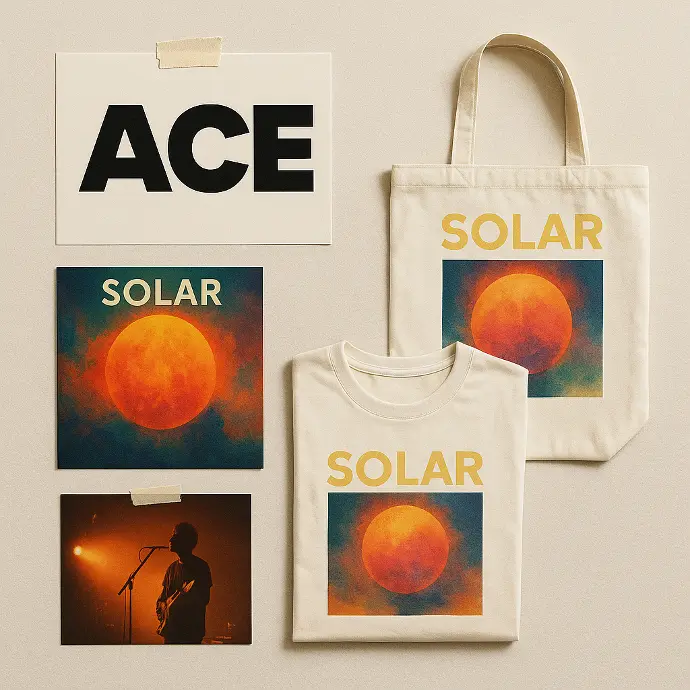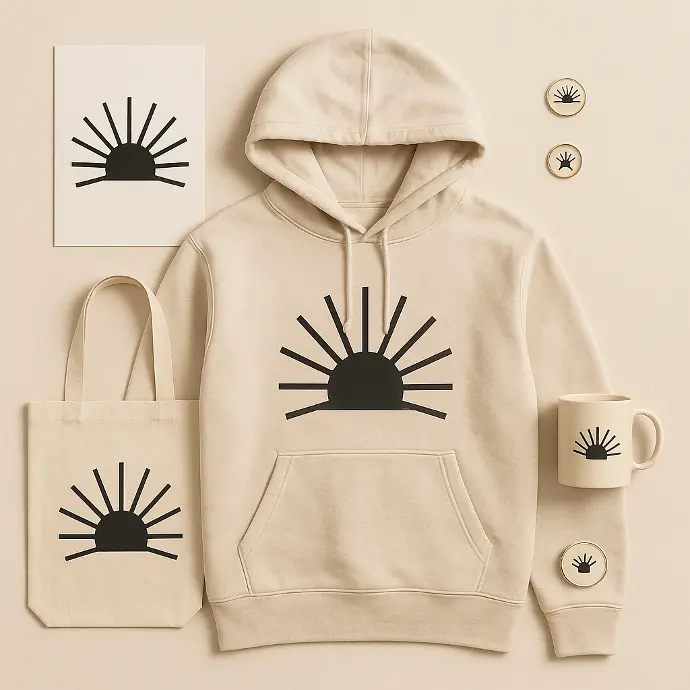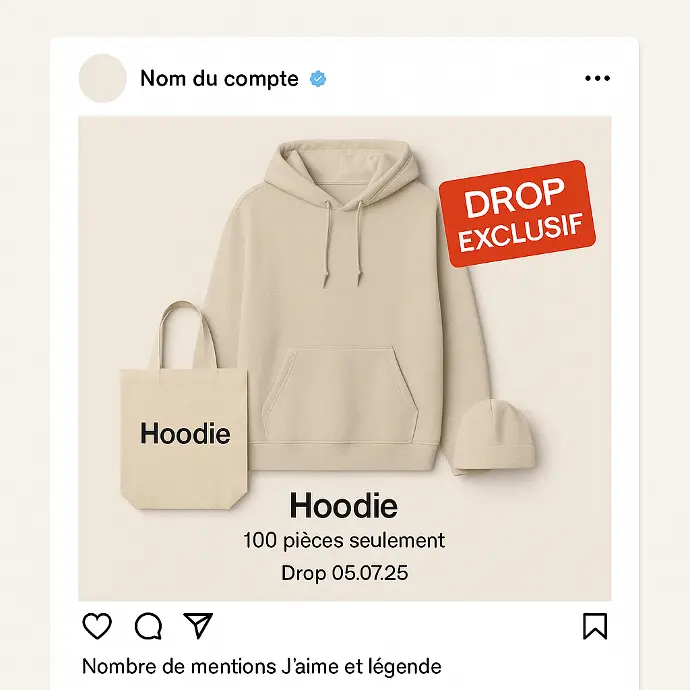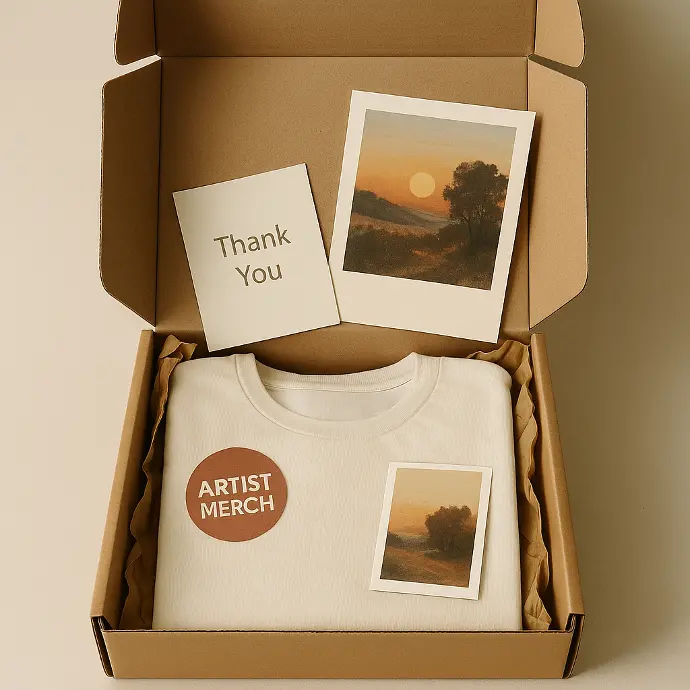Hello team, it's Leïla and ajd I'm talking to you about the best practices for building a merch collection for artists.
Key takeaways
- Visual consistency is everything: your merch should reflect your artistic identity across all products.
- Structure your range: build around one signature item and add accessible derivative products.
- Use limited drops to create excitement, scarcity, and fan engagement.
- Packaging matters: thoughtful details turn a simple order into an emotional moment.
- High-quality visuals sell more: mock-ups and lifestyle shots help fans connect to the merch emotionally.
Introduction
Creating merch is all well and good. But building a truly coherent merchandising collection for artists - one that reinforces your image, builds community loyalty and sells without forcing you - is even better. With our ultimate merchandising checklist for artists, find out more on how to start with your merch collection.
In this article, I'll show you how to build a merch collection for artists that makes sense: from visual identity to limited drops, by-products, visuals and the fan experience.
1. 🎨 Create visual consistency in your merchandising
Consistent artistic merchandising is merchandise that extends your universe without betraying it. The idea is not to put everything on a t-shirt, but to have a recognisable graphic line across several media.
The idea behind it is to work on your personal branding, or at least that of your identity as an artist. If you are interested, we wrote an article about our collaboration with Colt The Duo as we did their merchandising for several concerts.
You know, branding is recognising a brand with a brand indicator, however small. It could be the shape of a Coca-Cola bottle that's instantly recognisable, or Burberry's iconic tartan, or the colour of the Jupiler tank. If you're still confused about the idea of branding, you can check out this article where I explain it in more depth.
So first of all, I'd urge you to rework certain elements so that you have a consistent look and the clearest possible guidelines. The first is your colour palette, which should be in harmony with your visuals on stage, your music videos and your world in general. Your typographies should also be as close as possible to your world, identical to or complementary to those on your albums/website.
And finally, your general atmosphere: go back to your pure identity, who are you? What do you want your key message to be, and in what tone? This atmosphere can be minimalist, dark, pop, committed, nostalgic, rural - it doesn't matter, as long as it suits you.

2. 🧱 Structuring a range: flagship product + derived products
In general, a good artistic merchandising strategy is based on a coherent, well thought-out collection.
But what does a successful collection mean? It must be based on a clear structure: a main or “signature” product; a t-shirt, a hoodie, basically the centrepiece. And derivative products for artists: tote bags, posters, pins, stickers, which are more accessible to the general public.
The idea is to create a coherent range of by-products for artists that makes them want to be collected.

3. 🔥 Drops & limited editions: creating envy and rarity
Today, merchandise is also consumed in ‘drops’. The idea: limit in time or stock to create a feeling of exclusivity and rarity. If it's a production with visuals that are only available once, there's a good chance that your fans will go nuts for fear of missing out on something incredible, also called having FOMO for your merch.
Some effective formats are, for example, a drop just after a specific concert or just after the release of an album or single. A numbered limited edition adds to the feeling of rarity and gives the fan who owns the product the impression that he or she is part of an important movement that shouldn't be missed.
Another suggestion is to create a limited edition collection with another artist or designer, which can create even more excitement and anticipation around its release. What's more, the other artist's visibility could diversify your own and introduce you to new environments and audiences.
Finally, to make sure that everything is well harmonised, create a small merch calendar listing all your releases and any drops, in line with your musical releases.
Be careful though, some mistakes can happen, here are some that can be easily avoided.

4. 📦 Artist merch packaging and fan experience: going further than textiles
To go even further, you need to be able to touch your fans' emotions, to turn their merch purchase into a memorable souvenir. What makes this memory memorable is the attention paid to the fan's experience of the merchandise. To improve this experience, you can start by taking a close look at the packaging.
For example, to have effective packaging, it needs to be sober, recyclable but neat. You can insert a small card with a note from the artist, a punchline or an exclusive visual. But don't forget your common thread: it's important that there's a narrative link between your merch drop and what's happening in your musical career, whether it's a place, a date or a particular song.
By following these tips, any artist can sell merch to their fans without any problem.

5. 📸 Work on product visuals to sell more and better
A poorly presented product is a failed sale. So remember to include high-quality mock-ups for your online shop and photos of the merch worn in real-life conditions (in the studio, backstage, during the concert, etc).
Finally, don't hesitate to tease the project on the networks, make mini-reels on Insta or TikTok with the same visual storytelling.
Don't sell a t-shirt. Sell an emotion, a moment, a community.
🎬 Conclusion: a collection that tells a story
A good merch collection for artists is more than just ‘putting your logo on a tote’. It's an extension of your art, a vehicle for connecting with your community, and a sustainable source of income - if it's thought of as a creative project in its own right.
Bear in mind that you shouldn't always rush into things; you should try to keep the same thread running through all the possible and imaginable channels and select your products carefully. If everything is connected, fans will follow, if the collection doesn't make sense, some fans will follow blindly but others won't be affected in the same way.
Start with a flagship piece like a hoodie or t-shirt. Add simpler items like tote bags, stickers, posters, or caps to diversify your range and make it more accessible.
Between 3 and 6 products is a solid start. Too many can confuse the message — focus on a cohesive lineup.
A drop is a limited-time or limited-stock release of merch. It builds hype and encourages fast purchases by creating urgency and exclusivity.
If you have strong visual instincts, you can start small. But a designer can help ensure consistency and polish, especially for your first big release.
Tell a story. Make sure the design, packaging, and visuals all align with your music and personality. Fans don’t just buy products — they buy a feeling.


